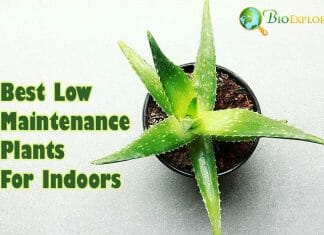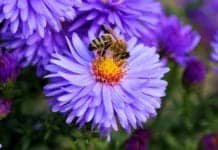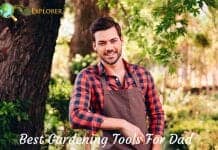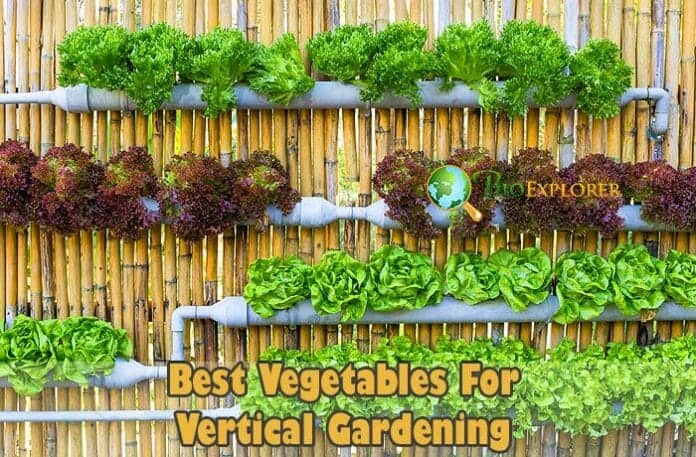
Best Vegetables For Vertical Gardening: If you plan to set up a vertical garden, you have to know what types of veggies you can grow in it. Not all vegetables are suitable for vertical gardening, so you can’t experiment because once you establish your garden, you will not find it easy to change it.
In this guide, you will find everything you need to know about vertical gardening and the best vegetables you can grow in it.
Vertical gardening is a gardening technique that implies growing your plants vertically by using a panel. This type of gardening can use a hydroponic system that avoids the use of soil in the process, but you can grow pot plants vertically.
You will find vertical gardening efficient and space-saving since you can plant more vegetables in a smaller space. If you know how to set up such a garden and maintain it properly, chances are that you will not have to worry about your plants.
Table of Contents
- What vegetables grow vertically?
- Do vertical gardens work?
- How do you start a vertical garden?
- What kind of veggies climb?
- Do cucumbers need a trellis?
- Can you grow carrots in a vertical garden?
- Is pallet wood safe for the garden?
- Vertical gardening ideas for vegetables
- What is the difference between vertical farming and hydroponics?
- What are the disadvantages of vertical gardening?
- What are the advantages of growing a vertical garden?
- What are the hardest plants to grow through vertical farming?
- Is vertical farming still way more expensive than traditional farming?
- Final Thoughts
What vegetables grow vertically?
There are plenty of vegetables that will grow vertically with no hassle. If you wonder what you can plant in your vertical garden, here are some valuable examples!
1. Peas

Peas are some of the best veggies you can grow in a vertical garden.
- You can choose to grow all three types of peas: snow peas, snap peas, and garden peas.
- Peas are not just easy to grow but very tasty in a variety of recipes. The vines of the peas are supported by thin tendrils that are also very resistant.
- The best time to grow peas in the spring is to grow fine in the fall. They are not summer vegetables, so you want to respect the timeline for a good harvest.
![]()
2. Cucumbers

Cucumbers are also a great choice if you want to grow them vertically.
- You can grow them on panels, fences, or archways, and they will look great in your garden.
- At the same time, you can choose any strain of cucumbers to grow as they are all suitable for this type of gardening.
- Plus, you can identify those cucumbers ready for harvest much easier since they will all be displayed in front of you.
- These veggies are a magnet for pests, so keeping them off the ground is vital for their healthy growth.
![]()
3. Green beans

Green beans are also known as pole beans. You can grow them vertically a lot better than in a traditional, horizontal garden.
- Some of the green bean plants can get as high as eight to ten feet. You can choose to grow different strains such as wax beans, French filet beans, or regular green beans.
- Pole beans will produce vegetables all the season and not just mature once as ground beans would.
![]()
4. Pumpkins

Pumpkins can also grow vertically as long as you create a system that supports their weight well.
- Pumpkins come in different sizes to choose a strain that grows to the dimensions you are comfortable with.
- The best type of pumpkin for vertical gardens is the baby pumpkin.
- A great thing about pumpkins is that you can grow them all year round.
![]()
5. Tomatoes

One of the best veggies to grow in your vertical garden is tomatoes.
- It will be easier to grow indeterminate and vining tomatoes as they can be easier to grow in a vertical garden than bush tomatoes or determinate ones.
- Your tomatoes will grow best in the summer, but you can enjoy them all year round with proper conditions such as a greenhouse.
![]()
6. Medium-size watermelon

Watermelons can grow vertically as well if you use the right system. They will have the same problem as pumpkins as they can get quite big.
- However, if you decide to grow baby watermelons or medium-size ones, you should be able to do that in a vertical garden.
- Watermelons are summer fruits, so you will not enjoy them all year round, but they are a fruit worth having in your garden.
![]()
7. Squash

Different types of squash are also able to grow in a vertical garden.
- However, winter squash can be pretty heavy when it grows to full size, which is why you might need to provide hammock support for it.
- Most of them are bush strains when it comes to summer squash and zucchini, but you can find smaller strains that will grow beautifully in a vertical garden.
- These veggies are not natural climbers, but you can train them to climb in your vertical garden with the right trellis.
![]()
Do vertical gardens work?
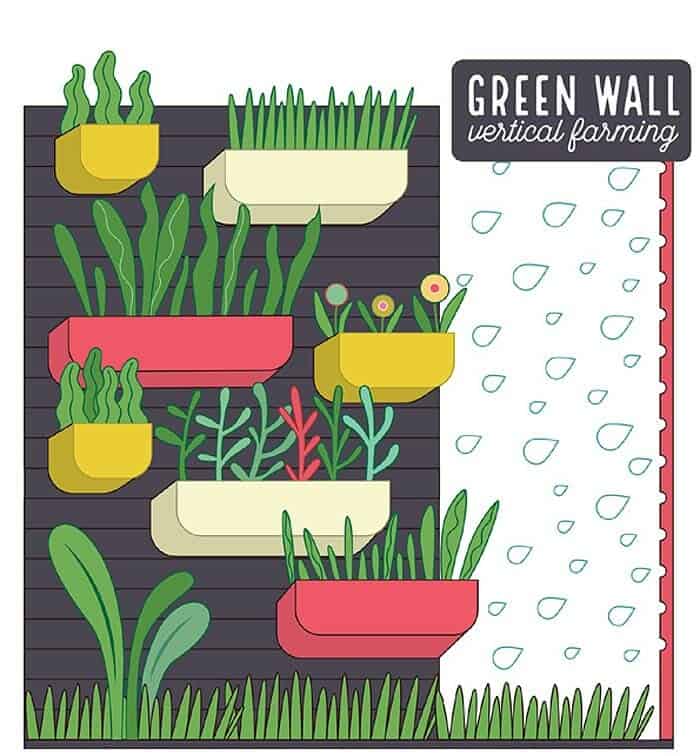
Vertical gardening is different than ground gardening but not less efficient. Your plants will grow healthier using hydroponics as they are kept away from pests and diseases they will find on the ground.
- As long as you choose fruits and vegetables suitable for vertical growing, you should have no problem with your vertical gardening.
- However, it is essential to realize that it would require a higher level of maintenance than a ground garden before you start a vertical garden.
- Plants grown this way will need more water and more nutrients than those grown in soil.
- Also, pruning will be a regular practice to maintain your plants healthy, and your garden is thriving.
Suggested Reading:
10 Best Low Maintenance Plants For Indoors
![]()
How do you start a vertical garden?
If you decided that this type of gardening is for you, you have to start it right or not bring you the benefits you expect.
Here are the steps that will help you have a great vertical garden all by yourself!
A) Choose the right wall or panel
You can’t have a vertical garden without a wall. You can choose a wall you would like to cover or install a panel just for this purpose. However, the panel or wall you use will have to be sturdy enough to support the weight of your plants, which is an essential aspect. The location of the wall or the panel is also essential. You have to make sure your plants will get the amount of sunlight they need to grow healthy.
![]()
B) Create a frame
Your vertical garden will need a frame. Specialists recommend avoiding metal as it adds unnecessary weight to the structure. You can create a frame from PVC or aluminum materials, and you can do that before you set up your panel. If you use a wall, you will have to attach the frame to the wall before anything else. Using wood for the frame is also a bad idea because you will have to deal with moisture and invest in wood treatments to maintain the conditions your plants need.
![]()
C) Use a plastic sheeting
Once you have your wall, panel, and frame, it is essential to use plastic sheeting. You will have to attach the plastic sheet to your garden frame and use PVC sheets here as well. If you use such a plastic sheet on a wood wall, make sure you use a ventilation system behind it.
![]()
D) Install the fabric
Attaching the fabric is also an essential step in your garden setup. You will have to attach the fabric layer directly to the frame and keep in mind that your plants will take their water from this layer. You can use any material that can absorb and retain water with no rotting hazards. But the layer of fabric you use will most likely be made of a minimum of two layers of the same material to offer you the results you want.
![]()
E) Take care of the irrigation system
Equally important with the previous steps is the irrigation system. The irrigation system will keep the fabric moist enough and offer your plants the water they need to thrive in your vertical garden. You can purchase an irrigation system already made, or you can put it together yourself. You will need a tube or pipe that goes across the panel or wall your garden is set up on and make sure the tube has water emitters so you can schedule watering time as your plants need. The emitters should be about two to three inches apart from each other to make sure all your plants get the water they need.
![]()
F) Add a fertilizer injection and a water source
You will find plenty of fertilizers injectors on the market, and it is crucial to use one, so your plants get the nutrition they need. This is a valve that adds fertilizers to the irrigation system. If you don’t add fertilizer to your plants, they will not receive what they need to grow without the soil. At the same time, you will have to attach the water source to your irrigation tube and schedule it accordingly.
![]()
G) Decide what plants you want to grow
Choosing the plants you want to grow in your garden is essential, so you will have to pay attention to this step. As you decide what plants to grow in your garden, you will have to consider more than their crawling abilities. Take into account light, water needs as well as recommended growing period to make the best decision.
![]()
H) Add your plants to the garden
You will next have to insert the plants in the fabric of your vertical garden. To do that, you will need to cut the fabric by using a sharp blade and make an opening big enough to allow to insert the plant and its roots. You might need to tighten up the opening by using a staple gun so your plant’s roots will be stable on the wall.
![]()
What kind of veggies climb?
It is essential to know your vegetables to establish which ones will do best in your vertical garden. You need climbing veggies for such a garden, so choosing the suitable strains is crucial. Vining veggies tend to be some of the best strains to go for when you decide what plants to use in your garden.
The best veggies that climb are cucumbers, squash, some strains of tomatoes, pumpkins, peas, and certain types of green beans and watermelons.
You can also grow veggies that are less popular such as bitter melons or chayotes.
![]()
Do cucumbers need a trellis?
When it comes to cucumbers, you have two types of cucumbers to choose from. The bush strains don’t require a trellis, but the climbing strains need a trellis to grow in a vertical garden.
- The vine cucumbers are the ones you want for your vertical garden, and you can’t grow those without trellis.
- Growing your cucumbers on adequate trellis helps the airflow and limits pests and diseases. You can use the types of trellis you have in your yard or that you use for other veggies as well, or you can invest in a set of trellis made for your cucumbers.
- Either way, these veggies need a trellis to grow in a vertical garden. When choosing the trellis, keep in mind that you should use a material that doesn’t rust, and it is a good idea to avoid metal altogether.
- Wood or PVC trellis should be perfect for your cucumbers, and they will not add weight to your garden frame.
![]()
Can you grow carrots in a vertical garden?
Unlike the climbing veggies we mentioned so far, carrots are root veggies. You can still grow them vertically with some adjustments.
- For instance, your carrots will not climb like the rest of the veggies, so you will have to put them in a pot. They need to be in soil to grow as well since this is an essential aspect.
- If you want to grow carrots or other root veggies in your vertical garden, you will need to add a suspended pot system where you can plant these veggies just like you would in a ground garden.
- The growing process will be similar as well. But you will not be able to grow root veggies in the same way as you would grow climbing ones.
![]()
Is pallet wood safe for the garden?
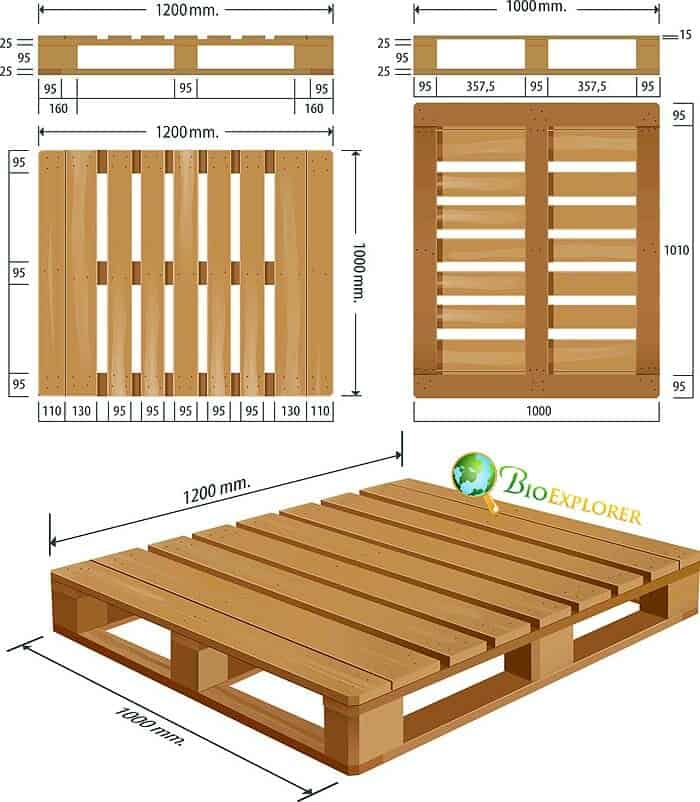
If you want to use pallet wood for your garden, consider important aspects such as moisture and weather tolerance.
- The pallet wood that is safe to use in your garden will come with a label that says HT, which means heat treated. You want your pallet wood to be heat treated and not chemically treated so your plants will be safe with such wood.
- The pallet type tends to be the most resistant from all types of wood, followed by timber wood. It is important not to direct the water directly on the wood as it will rot over time.
![]()
Vertical gardening ideas for vegetables
If you plan to get into vertical gardening, you might be interested in some valuable tips that will help you make the most out of your garden.
A) Use a planter
You can grow plants vertically by using different planter systems.
- For instance, crate planters can help you save a lot of ground space by growing your plants vertically.
- You can make your crate planter or purchase one already made. Either way, decide the number of levels you want it to have as well as the material you want it to be made of.
- Crate planters allow you to grow all types of veggies, not just climbing ones, to use them for carrots, onions, and potatoes.
![]()
B) Combine hydroponics with soil
You can split your vertical garden into different areas. Set up one area designed for plants you want to grow with hydroponics and another area for soil plants to hang pots. Dividing your garden like that will help you offer your plants the nutrients they need separately as well.
![]()
C) Set your garden in a place with enough sunlight
Where you install your vertical garden is crucial for your future plants as well. Different vegetables will need different light exposure, so you should choose the space with the optimum amount of sunlight for the types of plants you are planning to grow.
![]()
What is the difference between vertical farming and hydroponics?
Vertical farming or vertical gardening is the technique of growing plants vertically, using soil or hydroponics.

- On the other hand, installing a vertical garden for hydroponics will support only plants that grow with water and not soil.
- In hydroponic systems, the water used for the plants to grow correctly is enriched with nutrients and fertilizers so that all the food plants need is available.
- You can combine the two types of vertical gardening if you design your garden properly and separate the hydroponics from the soil plants.
![]()
What are the disadvantages of vertical gardening?
As charming and appealing as vertical gardening sounds, you have to keep in mind that there are also disadvantages to this system that you will have to consider.
You might need to work with a specialist to set your vertical garden up the right way
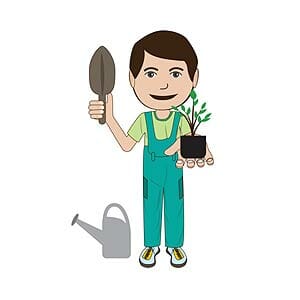
If you are not an expert in gardening and vertical farming, you might need to hire one for the initial establishment of your garden.
- Vertical gardens that are not set up correctly from the beginning can be quite a struggle to work with.
- Plus, if you need to correct the garden and the growing process, you will not find it very easy.
- So, unless you plan to spend many hours of research and inform yourself about these gardens, you might want to work with a specialist who knows precisely how to set up such a garden.
![]()
Investments at the beginning tend to be higher

The initial investment in a vertical garden is also higher than what you would invest in a regular garden.
- You can use some items that you might already have, such as pots or fabric for the panel, but most likely, you will purchase many of the items you need as well.
- Installing the irrigation system as well as the suitable fertilizers for your plants will also cost you money.
- Once your vertical garden is up and running, you will not have to put so much money into it, but the investment must be in the first phase.
![]()
Higher energy consumption
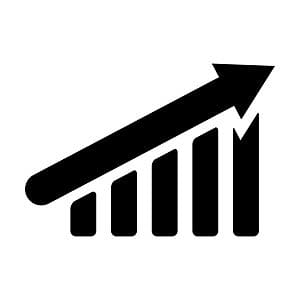
Depending on the type of plants you want in your garden, the energy costs can be high.
- Some plants require different lighting conditions, so you will have to provide that, while others need more irrigation.
- If you install your vertical garden indoors, lightning becomes a must as you will not be able to use sunlight at all.
![]()
Higher maintenance efforts
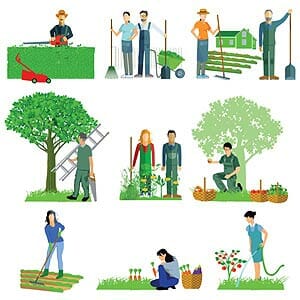
Overall, you will put the maintenance efforts in a vertical garden more than in a traditional one.
- You might have to trim your plants more often and check the levels of nutrients in their water as well.
- You will need to keep an eye on humidity levels and your lighting system to get the most out of your vertical farming.
- Checking for pests is also going to be a weekly, if not a more frequent, task. If pests enter your vertical garden, it will be a hassle to get rid of them.
- All these high maintenance efforts are more than you would invest in a traditional garden.
![]()
What are the advantages of growing a vertical garden?
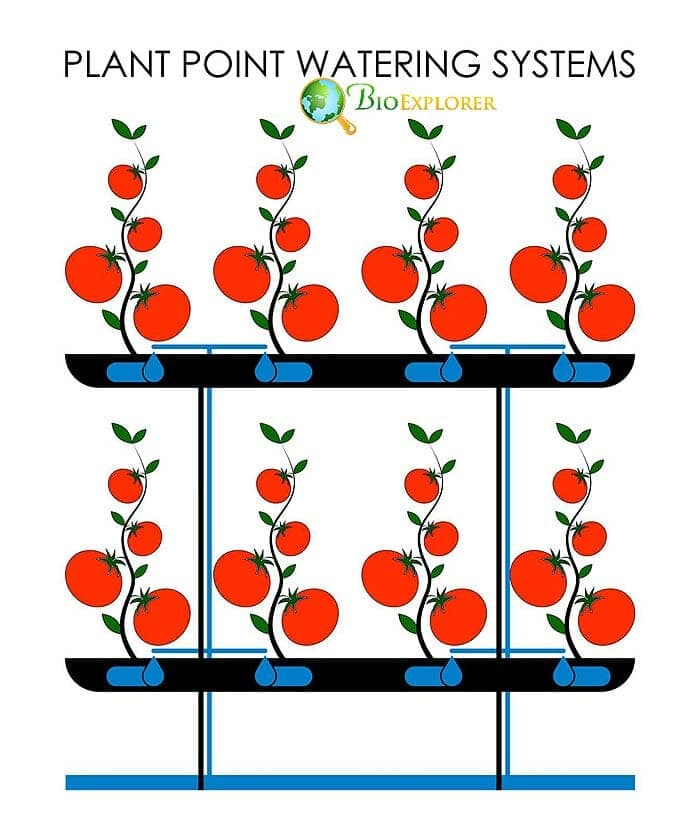
As concerned as you might be with the disadvantages of a vertical garden, you should know that the list of advantages of such a gardening system is even more extensive.
Better crop yields
Unlike ground gardening, you will be able to estimate the number of crops you will get from your vertical garden right from the beginning. This can help you significantly if you plan to sell your veggies and fruits or simply want to know what you can count on.
![]()
Protection against weather conditions
Growing fruits and veggies in a vertical garden offer them better protection against weather conditions. Even if you install your vertical garden outdoors, you will still be able to cover it more manageable in case of rain or extreme wind. If you set up your vertical garden indoors, you will not have to worry about weather conditions since you will control the temperature.
![]()
You can have crops all year round
Depending on the vertical gardening technique that you choose, you might even have crops all year round. If you install your garden indoors, this is possible. Having crops available for harvesting all year round is essential for farmers that want to sell those crops. Still, it can be a big advantage if you grow your vegetables for personal use.
![]()
Fewer pests
Vertical gardening is not affected by pests as much a ground gardening. Since your plants will not be on the ground but will be suspended on a wall or a panel, you will be much more in control of the insects and pests that might be able to reach them. If you maintain your garden clean and you take care of it properly, chances are that you will not have to worry about pests at all.
![]()
No invasive weeds
Just like vertical gardening doesn’t invite pests to your plants, you will not have to deal with any unwanted weeds either. With ground farming, you will deal with many weeds that manage to grow among your plants, being them veggies or fruits or simply flowers. But if you vertically grow your plants, you will not have to worry about weeds at all because they will not find the right conditions to infest your garden.
![]()
You can grow almost any type of plants
vertical farming is not just for vegetables and fruits but for any type of plant. Primarily if you use hydroponics, you will control all the conditions that your plants need to thrive. And if your plant can’t be grown by using a hydroponic system, you can always install a crate system in your vertical garden where you can grow your soil plants.
![]()
What are the hardest plants to grow through vertical farming?
Different plants have different needs, and they will also adapt differently to a vertical farming system. But there are certain plants that you might struggle with if you are planning to grow them in a vertical garden.
In terms of difficulty, the veggies and fruits that come in big sizes tend to be the most difficult to grow. Big watermelons or pumpkins might need extra care if you plan to grow them vertically using hydroponics and not a pot system.
If you are planning to use a pot system in your vertical farming establishment, you will be able to grow all the plants that match your pot.
![]()
Is vertical farming still way more expensive than traditional farming?
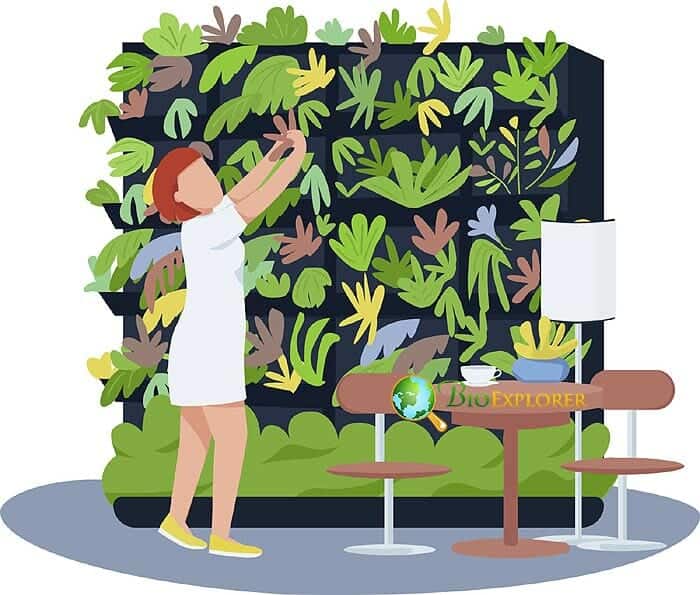
As a general rule, vertical farming is more expensive than traditional farming.
- However, the costs will vary according to the type of setup you choose and the types of plants you want to grow.
- Vertical farming can cost 3 to 5 times more than ground farming, but in the end, you could end up with more crops as well as healthier ones.
- So, even if you might spend more in the initial vertical farming setup, you will end up with more veggies than you can sell or enjoy for your personal use.
![]()
Final Thoughts
Regardless of the type of vertical garden you choose to set up, we recommend you take it one step at a time. If you are a beginner in this type of gardening, it is essential not to hurry to know the process. You will learn a lot if you take the baby steps you need, and you will be able to grow a wide variety of plants as well!


